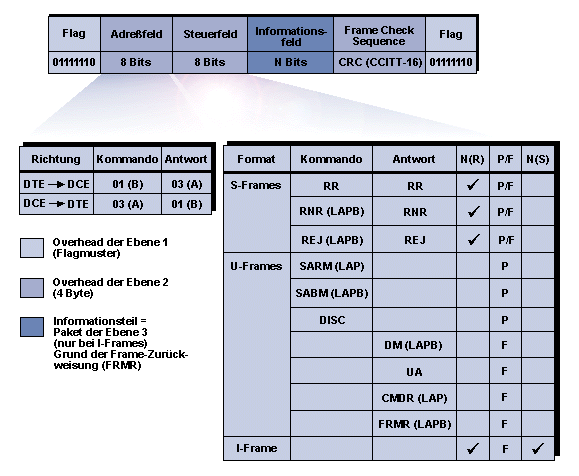link access procedure balanced (X.25) (LAP B)
The LAP-B protocol, Link Access Procedure Balanced, is used for bit- synchronous data transmission in the link layer. LAP-B is a link protocol and represents an HDLC variant that was used within the second layer in X.25 networks.
The "B" stands for balanced and indicates that the communicating stations are equal, i.e. have equal rights and obligations. The equal access procedure uses the equal spontaneous mode( ARM) and equal waiting mode( ADM) operating modes. The combination of the two modes of operation is referred to as the Balanced Asynchronous Class( BAC) in ISO standard 7809.
The BAC class is distinguished from the Unbalanced Asynchronous Class( UAC) and Unbalanced Normal Class( UNC) classes by the fact that both communication partners are hybrid stations and both stations can initialize the transition from the operating to the auxiliary operating state and vice versa on their own. This is possible because each station can be both master and slave station and has the right to set up and tear down the transmission section.
During transmission, the respective master station, organizes the transmission and requests the receiving station, the slave station, to receive and acknowledge the data. In the case of opposite transmission, the task areas of the stations are reversed.
The LAP-B protocol distinguishes between three different frame types, which may be numbered or unnumbered and are delimited by flags: Commands, Responses, and a combination of the two.
LAP B was used in conjunction with High Level Data Link Control (HDLC) in Datex-P.

